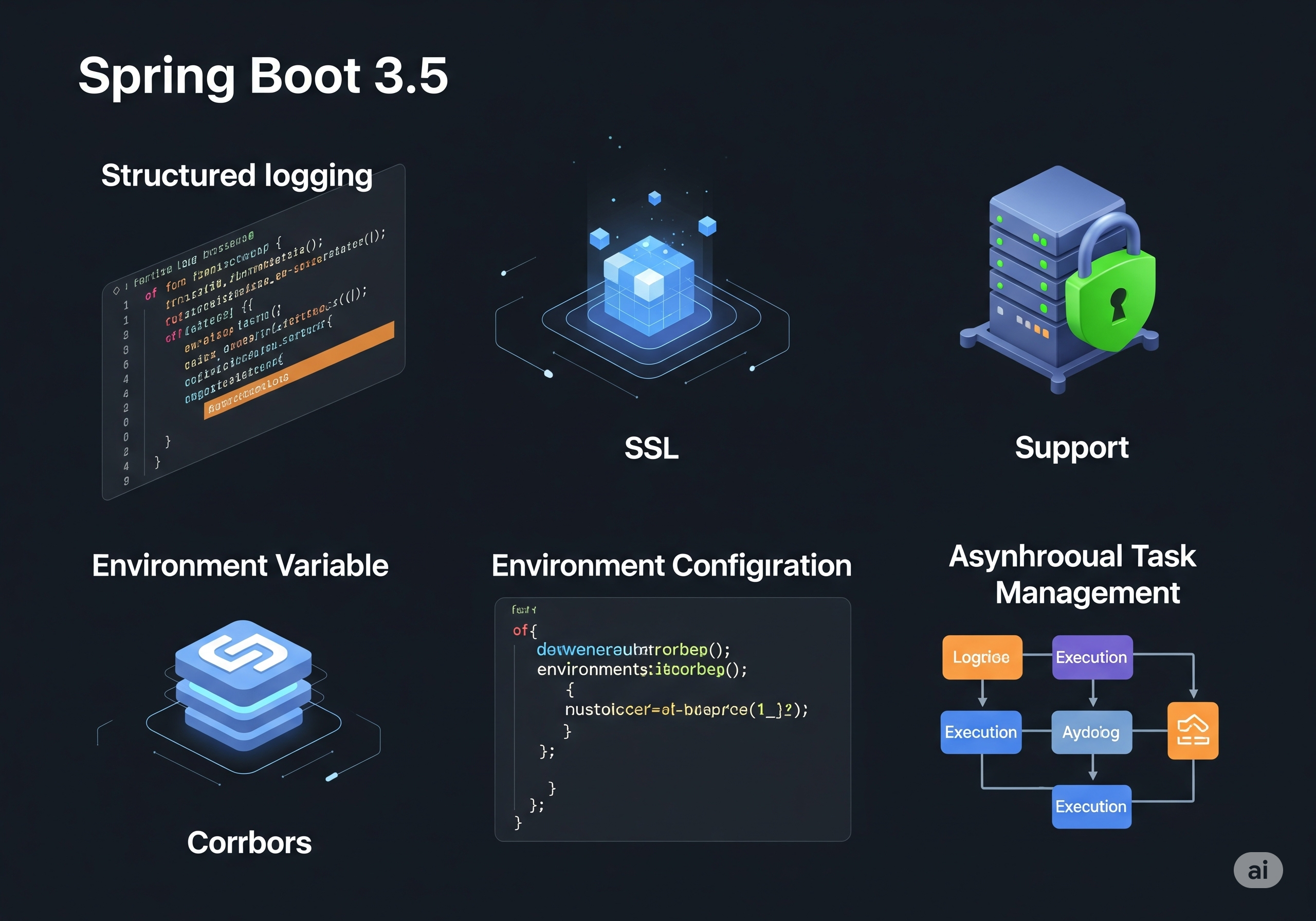Innovations / Solutions / Applications / Cloud-Native
AgileGuru Engineering blog on innovative solutions and technical excellence by engineers and architects.

Springing Forward: A Deep Dive into Spring Boot 3.5's Latest Features.
Guru Raghupathy, 03 July 2025
The Spring Boot ecosystem continues to evolve at a rapid pace, and the recent release of Spring Boot 3.5 (May 22, 2025) brings a host of exciting new features and improvements that promise to enhance developer productivity, application performance, and overall system observability. For those looking to keep their applications at the cutting edge, understanding these updates is key.
Let's unpack some of the most notable highlights of Spring Boot 3.5:
1. Enhanced Observability with Structured Logging and SSL Metrics
In the world of microservices and distributed systems, understanding what's happening within your application is paramount. Spring Boot 3.5 significantly ups its game in observability:
- Structured Logging Improvements: Customizing stack traces in structured logs is now easier than ever. You can configure
logging.structured.json.stacktrace.*properties to control their size and format, making log analysis more efficient and tailored to your needs. This is a huge win for debugging and monitoring complex systems. - SSL Bundle Metrics: For applications handling sensitive data, SSL is crucial. Spring Boot Actuator now publishes metrics for SSL bundles, including
ssl.chains(number of chains and their status: valid, expired, etc.) andssl.chain.expiry(time until certificate expiration). This provides invaluable insights into your application's security posture and helps proactively identify potential SSL-related issues.
2. Flexible Configuration with Environment Variables
Spring Boot's configuration capabilities are already robust, and 3.5 introduces a clever enhancement:
- Loading Multiple Properties from Environment Variables: While single property loading was already possible, you can now load multiple properties from a single multi-line environment variable using the
env:prefix (e.g.,spring.config.import=env:MY_CONFIGURATION). This greatly simplifies managing complex configurations, especially in containerized environments where environment variables are a common deployment pattern.
3. Streamlined Asynchronous Operations
Asynchronous processing is fundamental to building responsive and scalable applications. Spring Boot 3.5 provides more granular control:
- AsyncTaskExecutor with Custom Executor: If you have an
Executorbean, Spring Boot can now be configured to auto-configure anAsyncTaskExecutorregardless. By settingspring.task.execution.modetoforce, all integrations, including@Asyncprocessing, will leverage this auto-configured executor, ensuring consistent asynchronous behavior across your application. - Task Decoration for Scheduled Tasks: The auto-configured
taskScheduler,ThreadPoolTaskSchedulerSchedulerBuilder, andSimpleAsyncTaskSchedulerBuildernow apply aTaskDecoratorbean if present. This allows for consistent decoration of tasks, enabling use cases like propagating security contexts or tracing information across scheduled executions.
4. Improved Service Connection SSL Support
Security is a continuous focus, and Spring Boot 3.5 extends client-side SSL support to several key service connections:
- Client-Side SSL for Databases and Messaging: Cassandra, Couchbase, Elasticsearch, Kafka, MongoDB, RabbitMQ, and Redis now support client-side SSL. This means you can establish secure connections to these services right out of the box with proper configuration.
- Testcontainers and Docker Compose Integration: The Testcontainers and Docker Compose integrations have been updated to seamlessly allow SSL configuration, simplifying secure development and testing workflows.
5. Developer Experience Enhancements
Beyond the major features, Spring Boot 3.5 includes a collection of smaller, yet impactful, improvements for developers:
- Annotations for Filter and Servlet Registration: As an annotation-based alternative to
ServletRegistrationBeanandFilterRegistrationBean, new@ServletRegistrationand@FilterRegistrationannotations have been introduced. This provides a more concise and declarative way to register servlets and filters. - ClientHttpConnector Builder and Configuration Properties: Users of
WebClientcan now leverage properties for global configuration (e.g., timeouts, redirect settings), aligning with the blocking client support introduced in Spring Boot 3.4. A newClientHttpConnectorBuilderinterface offers even more customization options. - Updated Dependency Management: As always, Spring Boot 3.5 comes with crucial dependency upgrades to the latest stable versions of popular libraries like Micrometer, Spring Security, Spring Data, and many more, ensuring compatibility and access to the latest features and bug fixes.
- Java 21 Compatibility: Continuing its commitment to modern Java, Spring Boot 3.5 maintains strong support for Java 21, allowing developers to leverage the latest language features and performance improvements.
Conclusion
Spring Boot 3.5 is a significant release that builds upon the solid foundation of the 3.x series. The focus on enhanced observability, flexible configuration, and improved security demonstrates Spring Boot's commitment to providing a powerful and efficient platform for building production-ready applications.
As you consider upgrading your projects, remember that Spring Boot offers excellent migration guides to help you navigate any breaking changes or updated configurations. The continuous innovation in Spring Boot truly makes it a joy to work with, empowering developers to create robust and scalable applications with minimal fuss.
Author : Guru Raghupathy , 03 July 2025